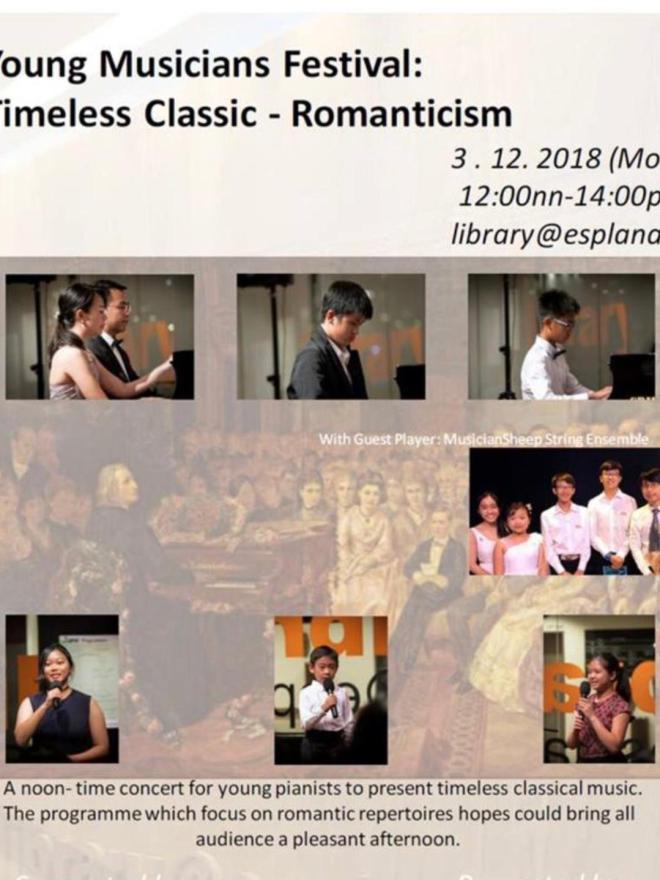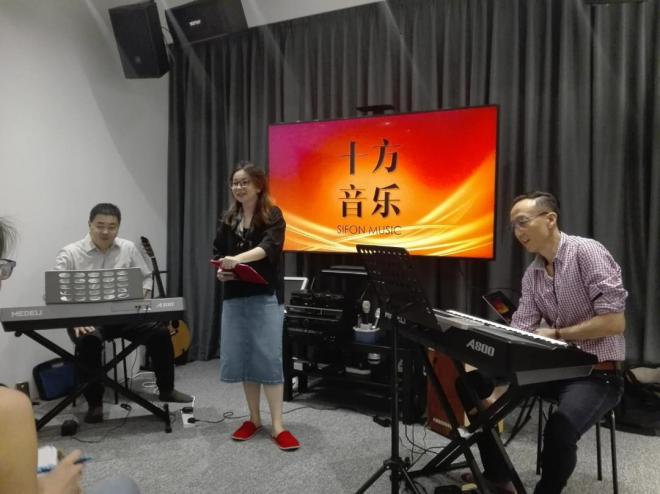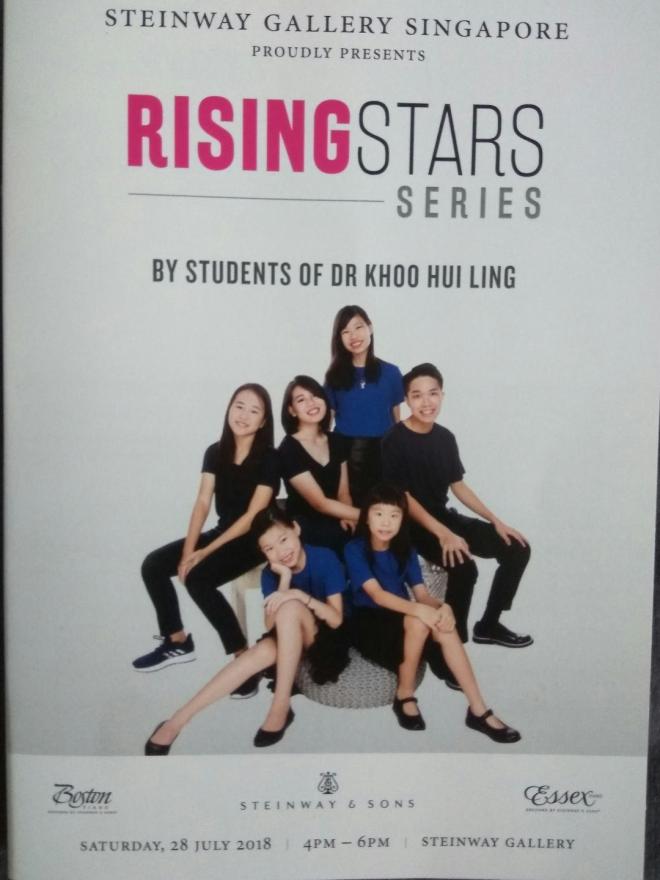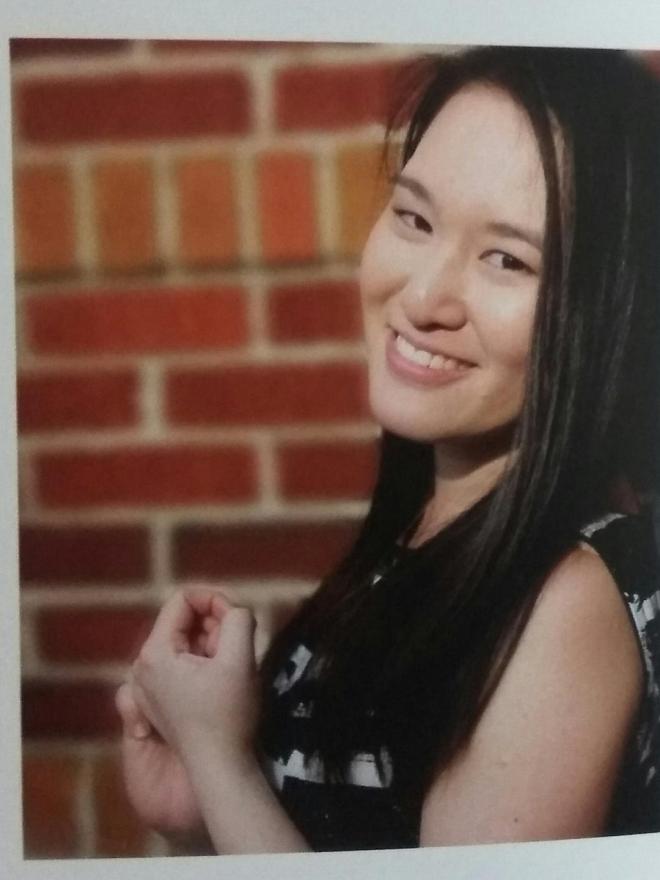
I was planning to go to the library@esplanade last Friday when a friend informed me about this noon-time concert for young pianists today, so I postponed my trip.
I arrived at the Open Stage at 11.45am and chose a seat on the left corner of the third row and heard some of the students practising on the Cristofori grand piano. At 12 noon, Midorie (one of the 2pianoteachers in charge of today’s concert; photo on top left) approached me and asked that I moved one row behind, claiming that I was sitting on a seat in a row reserved for the students who were performing. I obliged, almost losing a personal item in the process. Before me, an elderly man in the same row wasn’t too happy and insisted he wanted to sit on the left side when Midorie asked him to move to the right, so Midorie acquiesced by asking him to move one row behind, for the same reason. I must thank this gentleman for I would otherwise have been relegated to the right hand side too. I also wondered: if the seats were indeed reserved, why was there no indication (in the form of a sticker or something)? And I could have been querulous if I chose to, because in the end, random latecomers were the people who filled up the row!
Anyway, I digress.
A total of 23 pieces were performed by students whose ages ranged from perhaps four to late teens/early twenties. Surprisingly (or perhaps not so surprisingly), the piece I was most keen to look up the score to play is the first piece performed. Francisco Tarrega’s Adelita is a piece I believe was originally written for the classical guitar. It was performed by a young Leigh Mok (perhaps 7 or 8 years old). I like that the melody is romantic, soothing, charming and pensive; picking up a little in spirit in the middle and is not an intimidating piece to play for someone with arthritic fingers. Her second piece, Kullak’s Witched Dance, is fast and magical, with a mysterious feel and contrasting chords.
Each one of the rest of the performers gave a short introduction to the piece/pieces they would be playing. These include Schumann’s Album for the Young, Debussy’s Suite bergamasque, Kabalevsky’s Gallop and the Clown, Brahms’ Rhapsody in g minor and Delibes’ Le roi s’amuse, Some performers exuded confidence while others clearly tried to keep their nerves under control. This also came through in their playing. This concert has been a good platform for these young pianists to showcase their talent and build up their confidence by exposing them to performing in front of an audience from a young age.
There were also a few duet pieces by the students (a pair of sisters, two different student-teacher pairs) and the two teachers (Midorie and her husband Laurence). There was even a piano-violin duet by Laurence and his friend Yaw Yeang (the well-known Brahms’ Lullaby, Op 49 No 4). Midorie’s solo piece, Debussy’s Doctor Gradus ad Parnassum from Children’s Corner Suite, absolved her from anything she said or did in oversight earlier on.
An unexpected finale was the performance by a group of string students who call themselves the MusicianSheep String Ensemble (led by Yaw Yeang, whom I’ve been told studied at the Nanyang Academy of Fine Arts). Paganini’s Andantino was delightful, but I still prefer to listen to Chopin’s Etude Op 10 No 3 (Tritesse) on the piano anytime.






